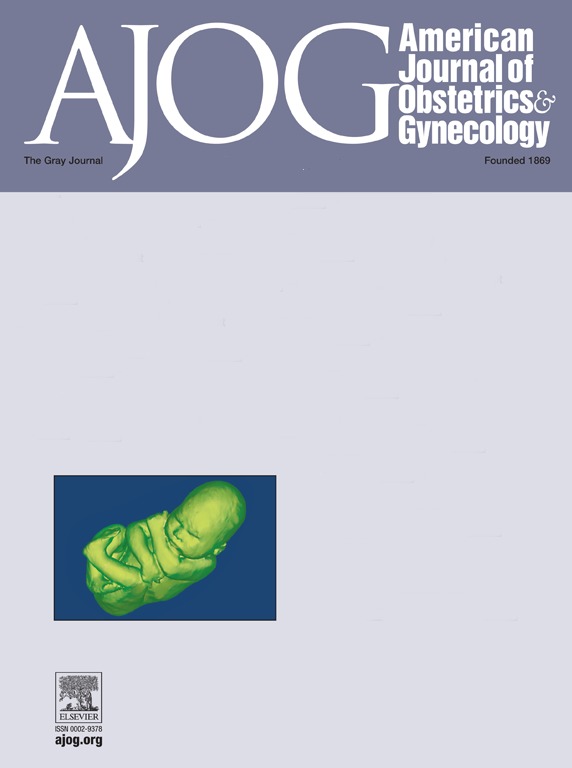强力霉素与左氧氟沙星联合替硝唑治疗慢性子宫内膜炎:一项随机对照试验。
IF 8.4
1区 医学
Q1 OBSTETRICS & GYNECOLOGY
引用次数: 0
摘要
背景:慢性子宫内膜炎(CE)的自发治愈率很低,多西环素单用或左氧氟沙星和替硝唑联合使用是治疗CE最广泛使用的两种抗生素方案。然而,目前还没有关于最佳抗生素方案的共识。目的评价多西环素单用和左氧氟沙星联合替硝唑治疗CE的有效性和安全性。在这项比较两种抗生素治疗CE的平行随机对照试验(RCT)中,172例使用CD138诊断为CE的患者被随机分为治疗组和对照组。治疗组采用左氧氟沙星联合替硝唑治疗,对照组采用强力霉素治疗。在抗生素治疗后的第一次月经增殖期进行反复宫腔镜检查和子宫内膜活检,以评估CE的消退。比较两组间CD138表达由阳性向阴性转化的CE一期治愈率及不良反应发生率。结果共纳入160例患者,其中治疗组79例,对照组81例。抗生素治疗1个疗程后,两组间CE治愈率差异无统计学意义(84.8% vs 77.8%) (P = 0.255)。在基于CE严重程度的亚组分析中,无论CE是轻度(88.9% vs. 83.7%) (P = 0.464)还是重度(79.4% vs. 68.8%) (P = 0.322),组间均无差异。意向治疗分析(n=172)中,治疗组治愈率为77.9%(67/86),对照组治愈率为73.3%(63/86),两组间差异无统计学意义(P = 0.595)。安全性分析中,治疗组不良反应发生率显著高于治疗组(11.6% vs. 2.3%) (P < 0.05)。结论两种抗生素治疗方案治疗CE有效、安全。研究没有发现两个抗生素治疗组在治愈率上有统计学上的显著差异。由于不良反应发生率较低,推荐使用强力霉素作为一线治疗。本文章由计算机程序翻译,如有差异,请以英文原文为准。
Doxycycline versus levofloxacin combined with tinidazole for treating chronic endometritis: a randomized controlled trial.
BACKGROUND
The spontaneous cure rate of chronic endometritis (CE) is very low, and doxycycline alone or a combination of levofloxacin and tinidazole are the two most widely used antibiotic regimens for treating CE. However, there is currently no consensus regarding the optimal antibiotic regimen.
OBJECTIVE
This study aimed to assess the effectiveness and safety of doxycycline alone and levofloxacin combined with tinidazole as antibiotic therapies for CE.
STUDY DESIGN
In this parallel randomized controlled trial (RCT) comparing two antibiotic therapies for CE, 172 patients with CE diagnosed using CD138 were randomly divided into treatment and control groups. Levofloxacin combined with tinidazole was administered to the treatment group, whereas doxycycline alone was administered to the control group. Repeated hysteroscopy and endometrial biopsies were performed during the first menstrual proliferative period after antibiotic therapy to evaluate the resolution of CE. The one-course cure rate for CE, based on the conversion of CD138 expression from positive to negative, and the incidence of adverse reactions were compared between the groups.
RESULTS
A total of 160 patients were enrolled, with 79 in the treatment group and 81 in the control group. After one course of antibiotic therapy, there was no difference in the CE cure rate between the groups (84.8% vs. 77.8%) (P = 0.255). In the subgroup analysis based on CE severity, there were no differences between the groups, regardless of whether CE was mild (88.9% vs. 83.7%) (P = 0.464) or severe (79.4% vs. 68.8%) (P = 0.322). In the intent-to-treat analysis (n=172), the cure rates were 77.9% (67/86) and 73.3% (63/86) in the treatment and control groups, respectively, showing no difference between the groups (P = 0.595). The incidence of adverse reactions was significantly higher in the treatment group (11.6% vs. 2.3%) (P < 0.05) in the safety analysis.
CONCLUSION
The two antibiotic therapy regimens were effective and safe for treating CE. The study did not find a statistically significant difference in cure rate between the two antibiotic therapy groups. Doxycycline alone is recommended as the first-line treatment because of the lower incidence of adverse reactions.
求助全文
通过发布文献求助,成功后即可免费获取论文全文。
去求助
来源期刊
CiteScore
15.90
自引率
7.10%
发文量
2237
审稿时长
47 days
期刊介绍:
The American Journal of Obstetrics and Gynecology, known as "The Gray Journal," covers the entire spectrum of Obstetrics and Gynecology. It aims to publish original research (clinical and translational), reviews, opinions, video clips, podcasts, and interviews that contribute to understanding health and disease and have the potential to impact the practice of women's healthcare.
Focus Areas:
Diagnosis, Treatment, Prediction, and Prevention: The journal focuses on research related to the diagnosis, treatment, prediction, and prevention of obstetrical and gynecological disorders.
Biology of Reproduction: AJOG publishes work on the biology of reproduction, including studies on reproductive physiology and mechanisms of obstetrical and gynecological diseases.
Content Types:
Original Research: Clinical and translational research articles.
Reviews: Comprehensive reviews providing insights into various aspects of obstetrics and gynecology.
Opinions: Perspectives and opinions on important topics in the field.
Multimedia Content: Video clips, podcasts, and interviews.
Peer Review Process:
All submissions undergo a rigorous peer review process to ensure quality and relevance to the field of obstetrics and gynecology.

 求助内容:
求助内容: 应助结果提醒方式:
应助结果提醒方式:


